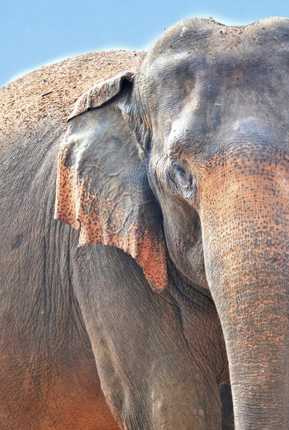
All Animals

The Elephant: Majestic Giant of the Animal Kingdom
The elephant, the largest land mammal on Earth, is a symbol of grandeur and strength. Known for their impressive size, intricate social structures, and remarkable intelligence, elephants are among the most fascinating and important animals in the natural world. Native to Africa and Asia, they play a crucial role in their ecosystems and have significant cultural and ecological importance.
Elephants are distinguished by their massive bodies, long trunks, and large ears. Adult elephants can weigh between 5,000 to 14,000 pounds (2,300 to 6,350 kilograms) and stand up to 13 feet (4 meters) tall at the shoulder. Their trunks, which are elongated and versatile, serve multiple functions including feeding, drinking, and social interactions. With over 40,000 muscles, the trunk is an incredibly sensitive organ that allows elephants to perform delicate tasks, such as picking up a single blade of grass or gently touching a fellow herd member.
Elephants are divided into three species: the African savanna elephant, the African forest elephant, and the Asian elephant. African savanna elephants are the largest of the three and are found across various habitats, including savannas, grasslands, and forests. African forest elephants, which are smaller and have straighter tusks, inhabit the dense rainforests of Central and West Africa. Asian elephants, slightly smaller than their African counterparts, are found in a range of habitats from grasslands to forests in South and Southeast Asia.
The social structure of elephants is complex and matriarchal. Female elephants, or cows, form tight-knit family groups led by the eldest and most experienced female, known as the matriarch. These family units consist of mothers, daughters, and their young, and they work together to find food, water, and protection. Male elephants, or bulls, typically lead more solitary lives or form loose associations with other males, especially during their reproductive years.
Elephants are herbivorous and have a diverse diet that includes grasses, leaves, fruits, and bark. Their feeding behavior has a significant impact on their environment, as they help maintain the health of vegetation and create pathways through dense forests. By uprooting trees and clearing vegetation, elephants contribute to the formation of open spaces that benefit other species and promote biodiversity.
Despite their majestic presence, elephants face numerous threats. Habitat loss due to deforestation, agricultural expansion, and human encroachment has significantly reduced their living spaces. Poaching for ivory, which is highly valued on the black market, has led to a dramatic decline in elephant populations. Human-wildlife conflict, often resulting from elephants raiding crops or damaging property, further exacerbates their plight.
Conservation efforts are vital to ensuring the survival of elephants. Organizations and governments are working to combat poaching, protect and restore habitats, and promote coexistence between elephants and local communities. Anti-poaching initiatives, such as increased patrols and monitoring, are crucial in curbing illegal ivory trade. Education and community engagement programs aim to foster positive relationships between humans and elephants, promoting sustainable practices and mitigating conflicts.
Elephants hold significant cultural and symbolic value across various societies. In many cultures, they are revered as symbols of wisdom, strength, and prosperity. Their presence in art, mythology, and religious practices underscores their importance to human heritage and cultural identity.
In summary, the elephant, with its majestic size, intricate social behavior, and ecological significance, stands as a testament to the richness of the natural world. Protecting elephants and their habitats is essential for maintaining ecological balance and preserving the heritage of these magnificent creatures. By supporting conservation efforts and fostering a greater appreciation for elephants, we contribute to the survival of this iconic species and the health of our planet’s ecosystems.
